A living expression of Mexican culture
Mexican music and dance in Mexico are central components of the national identity and forms of expression of the country's cultural heritage. They combine influences from indigenous, Spanish and African traditions and vary greatly depending on the region. Traditional music styles such as mariachi music and ranchera are widespread and often accompany festivals and celebrations. Mexico songs are an important part of these celebrations and tell stories of love, nature and life in the country. Dances such as the Jarabe Tapatío represent the vibrant cultural diversity, while Mexican dance encompasses different regional styles.
Mexican singers help to spread these musical traditions and express the sounds and emotions of their homeland. Mexican music groups also play a central role in the promotion of culture. These art forms are not only a source of entertainment, but also an important means of passing on stories and traditions that reflect Mexico's rich history and identity.
The diversity of Mexican music
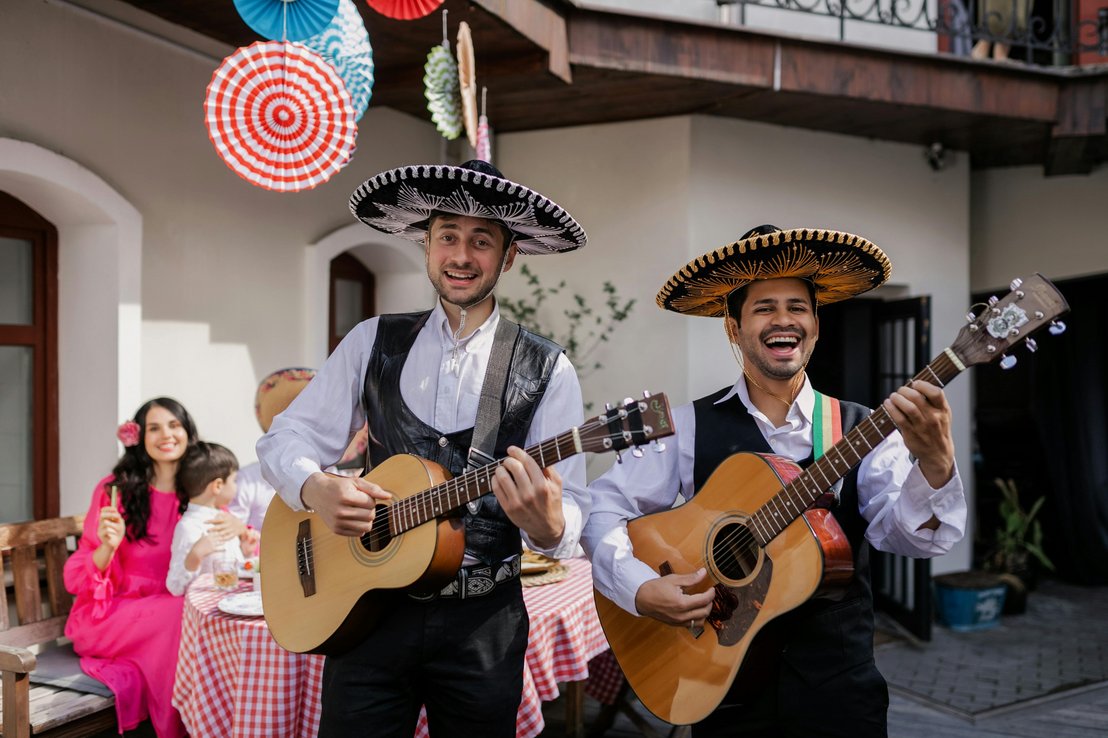
The history of Mexican music is a fascinating expression of the country's cultural development, which has unfolded over centuries. Originally, indigenous music with instruments such as flutes and drums dominated.
In the 16th century - with the arrival of the Spanish - there was a fusion of indigenous and European musical styles, which led to the development of the son.
In the 19th century, Mexican music experienced a revival with the popularity of mariachi music and ranchera. Mariachi groups, known for their festive sounds, became a symbol of Mexican identity. Ranchera songs often thematise love and home.
In the 20th century, styles such as bolero and cumbia contributed to the diversification of Mexican music and made it internationally recognised. Today, Mexican singers and artists such as Carlos Santana and Luis Miguel combine traditional sounds with modern influences, illustrating the continuous evolution of Mexican music.
The diversity of Mexican music
This category includes the oldest musical styles in Mexico, which are strongly influenced by indigenous cultures and the Spanish colonial period. Examples include mariachi, ranchera and son jarocho. These musical styles are deeply linked to Mexican identity and rural regions and are often played at festivals and religious celebrations.
Mexico also has a thriving pop music scene that encompasses genres such as rock, pop, reggaeton and hip-hop. Artists such as Luis Miguel and Maná have helped to popularise Mexican pop music on an international level.
Each region of Mexico has its own musical traditions. The norteño style from the north, which is dominated by accordions, and the banda style from the west are examples of music that is specific to certain regions and enjoys great popularity there.
This category includes music associated with religious ceremonies and festivals, such as Día de los Muertos. Traditional religious songs and chorales play an important role, often accompanied by instruments such as guitars and trumpets.
Mexico round trips - culture, nature, history

Mexico Día de Muertos
- World-famous Mexican festival of the dead
- Archaeological sites of Oaxaca
- Cartagena's historic old town
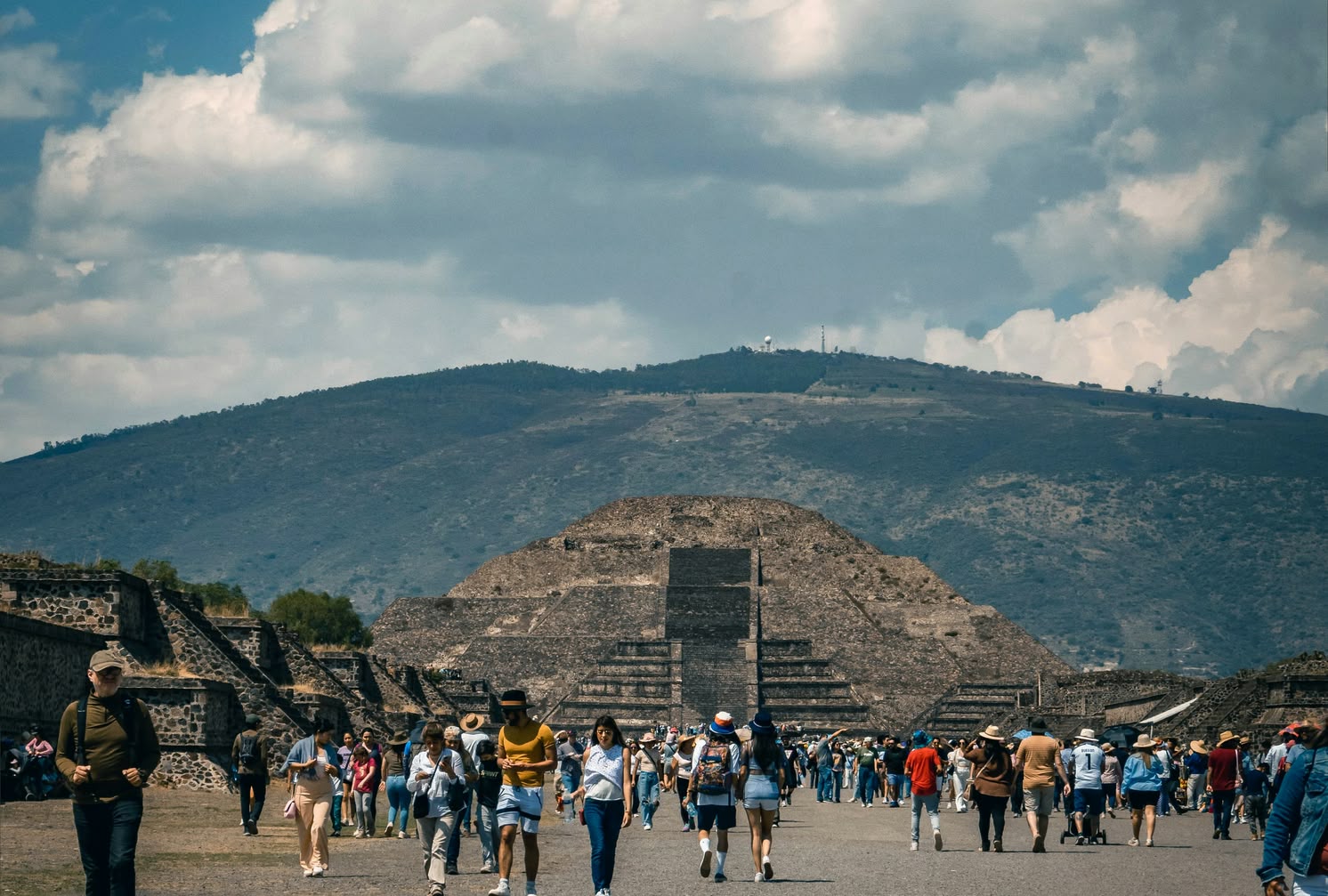
Mexiko Cities and the Sea
- Aztec ruins of Teotihuacán
- Magical villages of Puebla, Cholula and Atlixco
- Relax on the beaches of Playa del Carmen
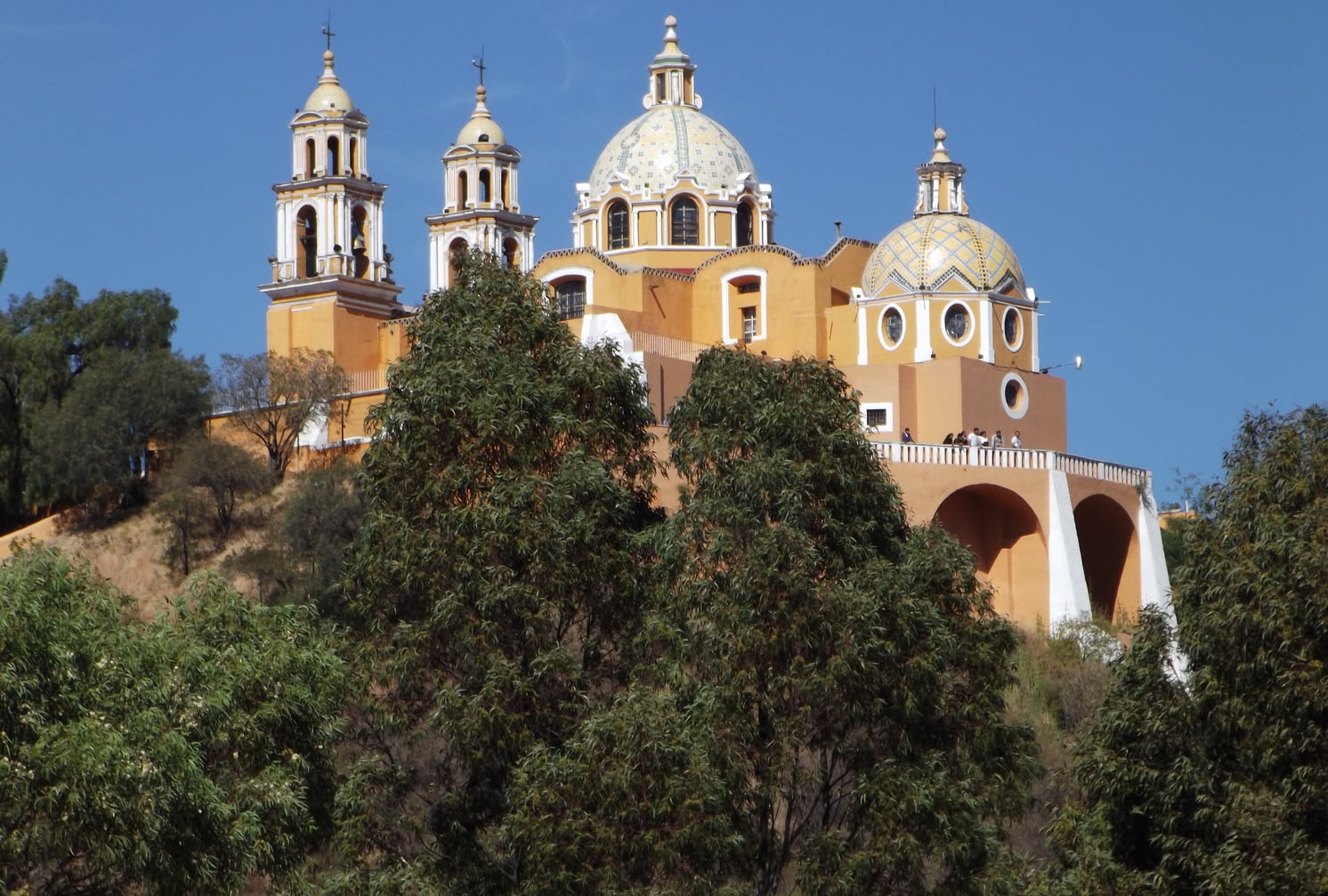
Traditional Mexico
- Hearty Mexican cuisine
- Ruins of Teotihuacán
- Magical villages of Cholula and Atlixco
Dance Mexico - tradition, diversity and cultural forms of expression
Dance in Mexico is a living expression of cultural diversity and an important element in social and religious ceremonies. It reflects the country's history and traditions, which have been shaped by indigenous peoples, Spanish colonisers and other cultures.
Mexican dances are not only entertainment, but also have a deeper meaning. Many of them tell stories, honour the gods or celebrate the cycle of life. At festivals and celebrations, dance and Mexican music are closely linked, which contributes to a festive atmosphere. The influence of Mexican folk music reinforces the cultural connection and ensures that traditions remain alive.
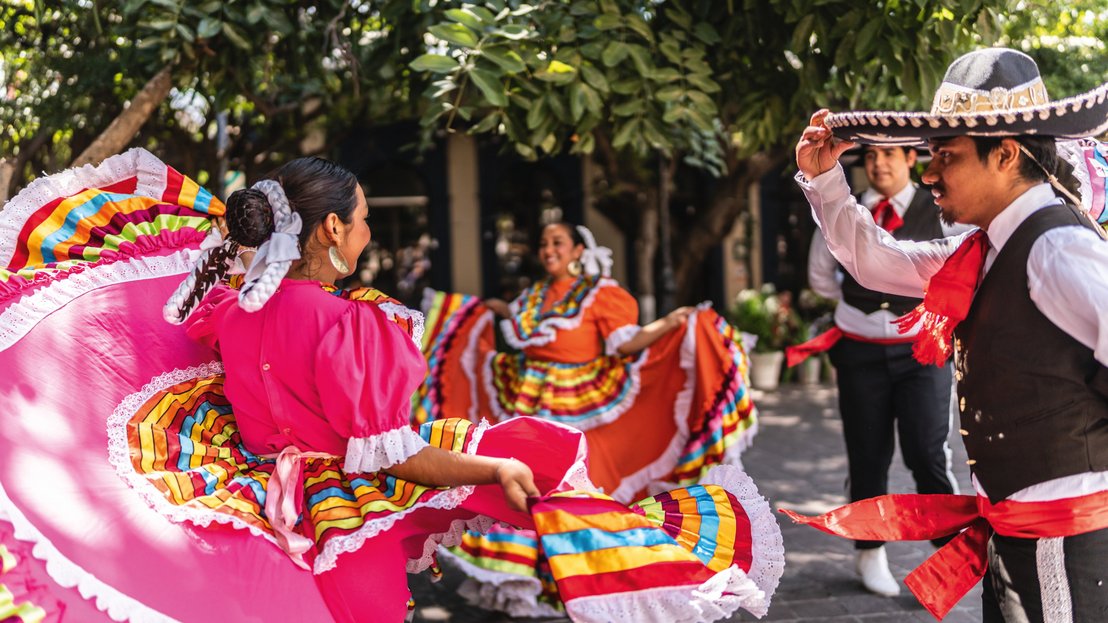
Dance culture in Mexico - tradition meets modernity
This category includes dances that are deeply rooted in Mexican history and often go back to pre-Hispanic or colonial traditions. Examples include the Jarabe Tapatío and the Son Jarocho, which are performed at festive occasions and official celebrations.
These dances are often of a spiritual nature and are danced during religious ceremonies or in honour of deities. The Danza de los Voladores and the Concheros are examples of dances that have a deep symbolic meaning and are often seen at festivals and ceremonies.
Different regions of Mexico have their own unique dance styles that reflect local culture and traditions. Dances such as the Danza de los Viejitos from Michoacán and the Huapango from the Huasteca region are typical examples of regional dances.
Modern dance styles such as cumbia, salsa and other Latin American dances have established themselves in urban areas of Mexico. These are danced at social events and in dance clubs and are an integral part of contemporary Mexican dance culture.
Don't miss the chance to make your dream trip a reality! Contact our experienced travel consultants now and let them inspire and advise you for your trip. Take the first step towards your unforgettable adventure!
Festivals and events - Music and dance in Mexico
In Mexico, there are numerous events and festivals that celebrate music and dance. Some of the best-known events are
A large festival in Oaxaca that takes place every July and centres on the traditional dances and music of Mexico's indigenous peoples. Everyone wears colourful costumes and performs regional dances.
On 1 and 2 November, celebrations are held in honour of the deceased, in which traditional music and dances play an important role, especially in the form of street parades and folkloric performances.
A world-famous festival that takes place in September and celebrates mariachi music from all over Mexico. It attracts thousands of visitors and offers concerts and dance performances.
Frequently Asked Questions - Music and Dance Mexico
A bolero is a short, waist-length jacket or top that often has no collar or buttons and is worn open at the front. It is common in women's fashion and can be worn formally or casually, often over dresses or blouses.
Bachata is often considered somewhat easier to learn than salsa, especially for beginners. The steps are slower and there are fewer fast foot movements. Salsa, on the other hand, is faster and requires more technique and a sense of rhythm. Both dances have their own challenges, but Bachata is often considered more accessible for beginners.
Salsa originated in Cuba and developed from various African and Spanish music styles, such as Son Cubano and Mambo. Salsa was later developed further in the USA, particularly in New York City, where it became internationally recognised.
Flamenco is a traditional Spanish music and dance style that originated in Andalusia. It combines passionate dancing, expressive singing and virtuoso guitar playing and often reflects strong emotions such as joy or sadness. Flamenco is strongly linked to the culture of the Roma (Gitanos) in Spain.
Mariachi music is a traditional style of music from Mexico characterised by a combination of violins, trumpets and guitars. The musicians, often dressed in splendid charro costumes, play songs that tell of love, heroism and life in Mexico. Mariachi bands can often be heard at celebrations such as weddings and festivals.
Mexican musicians who play traditional music styles such as mariachi are often referred to as mariachis. Musicians who play modern or popular music are generally called cantantes (singers) or músicos (musicians), depending on their musical genre and instrument.
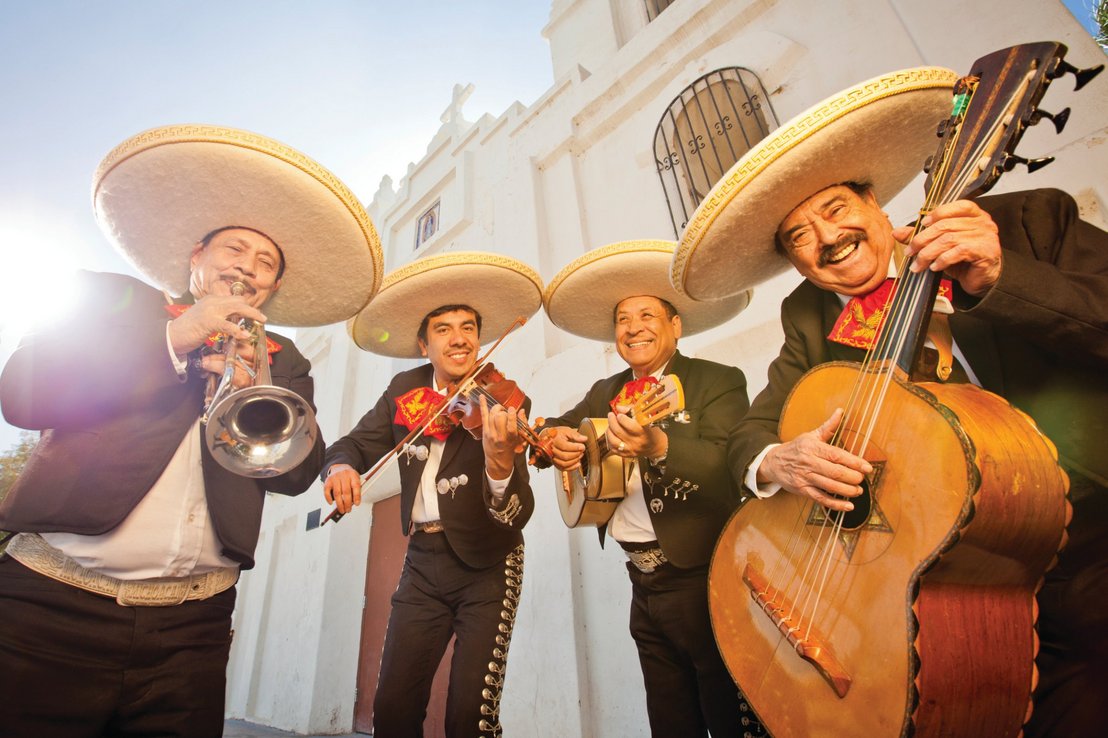
This might also interest you
Culture and religion Mexico
Learn the most important facts about Mexico's diverse culture, characterised by indigenous traditions and Spanish heritage.
Travel information Mexico
Find out about important travel information in advance to enjoy your trip to Mexico safely and relaxed.
Population and language
Immerse yourself in the vibrant culture of Mexico, where the warm-hearted people and the rhythmic Spanish language make up the pulsating heart of the country.
